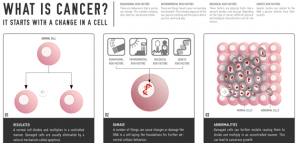The idea that content is king is still true.
After all, digital marketing hinges on the idea that businesses present content to a specific audience to entice them to take some sort of action.
In some cases, this action is to make or purchase or request a quote.
However, there is another opportunity where the content itself is simply educational and offers added value to entice customers through the sales journey.
And that type of content marketing is referred to as content selling.
To help you understand the process and why it is so crucial to your digital marketing strategies, our Rock Content team has compiled this guide with tons of helpful information.
We’ll go over the difference between content selling and content marketing, plus offer plenty of useful and actionable tips on how to incorporate it into your campaigns.
Let’s get started.
Download this post by entering your email below
What is Content Selling?
Before we can jump into how to use content selling as a way to convert more leads, we need to go over what content selling entails and why it is important.
Content selling is the process of using educational content as part of a follow-up process to build a trust relationship with your leads.
How does this work?
You already know that it can take between seven and twelve contacts to get a lead to make a buying decision.
During that time, sales reps need to keep sending consistent messaging to keep the process rolling and your brand top-of-mind for your customers.
But what do you say to your leads during each of these interactions?
The answer is content selling, which focuses on things like addressing objections, offering guidance, and even providing insight into how your product or service can meet their needs.
For a sales rep, this is an excellent way to offer additional information while giving the customer a reason to build trust with your company.
To put it simply, incorporating content throughout the entire sales process is a better way of anticipating and meeting objections before they’re made, which increases the likelihood of conversion to a paying customer.
Content Selling vs Content Marketing: What’s the Difference?
Now, you might wonder what the difference is between content marketing and content selling.
Content marketing is a more broad approach to providing educational content.
It is directed at a wider audience, which is likely comprised of your target market and anyone who happens to stumble upon your website or social media pages.
In contrast, content selling is directed specifically at a certain buyer persona who has already taken a first action to enter the sales funnel.
These are people who have already asked for more information, joined an email list, or have otherwise given consent for you to continue to follow-up with them.
Furthermore, content selling can be used to upsell existing customers into choosing a new product addition or upgrading their current package.
For those who adhere to basic sales terminology, content selling is directed at warm or lukewarm leads. Content marketing is designed for cold audiences who may or may not be already familiar with your brand.
By understanding the difference between the two types of content, you can craft each message to meet the needs, wants, and desires of that specific audience.
The Importance of Content Selling to Your Strategies
The biggest rule of sales is still incredibly simple — even in the digital age.
People buy from people and companies that they trust and who offer a solution to their needs.
That said, using content selling to increase the effectiveness of your marketing strategies is important.
Sales reps can’t be everywhere at once. But they can use content that directly relates to the buyer’s needs and helps further their movement through the customer journey.
Here are a few additional facets to consider:
Content Selling Keeps You on Their Radar
Often, leads forget you exist within the blink of an eye.
There are just far too many alternatives out there — a fact that your competitors know all too well.
Content selling ensures you’re reaching them at periodic intervals with engaging information designed to pique their interest.
By using this as a contact point, you’re reminding them who you are and what you do.
In turn, this makes it easier to get in touch when you’re ready to do a sales call or further inquire about their level of interest.
It’s also great for referrals, brand recognition, and other elements crucial to digital marketing.
Overcome Objections Before They’re Presented
Good sales people know when their product or service has a particular flaw.
They’re also highly attuned with what the average objections are from leads.
That said, content selling is a good way to address these issues and overcome them, even before the lead has presented them.
Whether you’re using interactive content or simple text, by bringing these issues forward immediately, you make it less likely that they’ll be able to object at all.
Afraid of giving your leads additional objections that they didn’t know they even had?
This is where things can get a little tricky. It’s best to choose items that you know there’s a clear solution to and can present the answer for.
Using Content Selling to Assist Non-Decision Makers
In some environments, the person you’re in contact with as a lead is not necessarily the end decision-maker. And that’s okay and completely normal.
The best part about using content selling in this type of situation is that you’re given those non-decision makers additional information that they can then present to those who do have the authority to agree to a purchase.
Think of it as bundling sales material in a way that makes it easy to pass along up the chain of command.
In a B2B setting, this can be an amazing way to get better results and more sales, simply because you’re able to provide all of the information in an educational and professional manner.
How to Create Content That Sells and Converts
So, what’s the secret to creating content that sells and converts?
There are actually several steps that you’ll want to do in order to see a difference in your conversions:
Step One: Think About Your Audience
Before you can use content selling to improve conversions, you want to first think about your audience.
Are they primarily non-decision makers in a B2B environment who need information to pass on to their bosses?
Or is the lead an individual who will ultimately make the buying decision?
This is important, as it gives you an idea of the tone and angle to take with your content.
Step Two: Decide How Many Contacts It Takes to Close
Next, look at any past sales data.
How many contacts does it take to traditionally close a sale for your team?
Map out your content to address these touchpoints.
While adding content selling to your strategy can dramatically reduce the time it takes for your ideal buyers to make a decision, it is best to try to have multiple opportunities to reach them through planned content.
Step Three: Create the Content
Next, you’ll want to actually create the content.
It is recommended to use a variety of formats, as some people respond to messaging in different ways than others.
For example, you might do an email blast with a quick FAQ format, but then follow up with a demonstration video later.
How this looks will ultimately depend on your niche, price point, and the areas where your lead is best receptive.
Step Four: Automate Your Content
By now, it is safe to assume that your company knows the importance of having a solid CRM software solution.
That’s where you want to find ways to integrate content distribution on an automated basis.
For example, you might have a drip-feed of emails that go out every so many days after someone signs up or becomes a lead.
Use your automation to track analytics and make changes along the way, if there’s a need to do so.
Wrap Up: Content Selling for Better Results
Content selling is an excellent way to keep in touch with lead prospects, while giving them the information necessary for conversion and building trust in your brand.
By understanding the difference between this type of content and general content marketing, you can craft a message that speaks directly to your clients’ needs and makes selling easier for your team.
And since we’re talking about this, aligning marketing and sales teams can be tough.
That’s why this Jam Session with Anna Talerico is a must-watch! Check it out for more information and to learn how to make it work for your brand.



![[ROCK NA] [EBOOK SEO] Complete Guide](https://rockcontent.com/wp-content/uploads/2024/06/banner_Search-Engine-Optimization.png)






